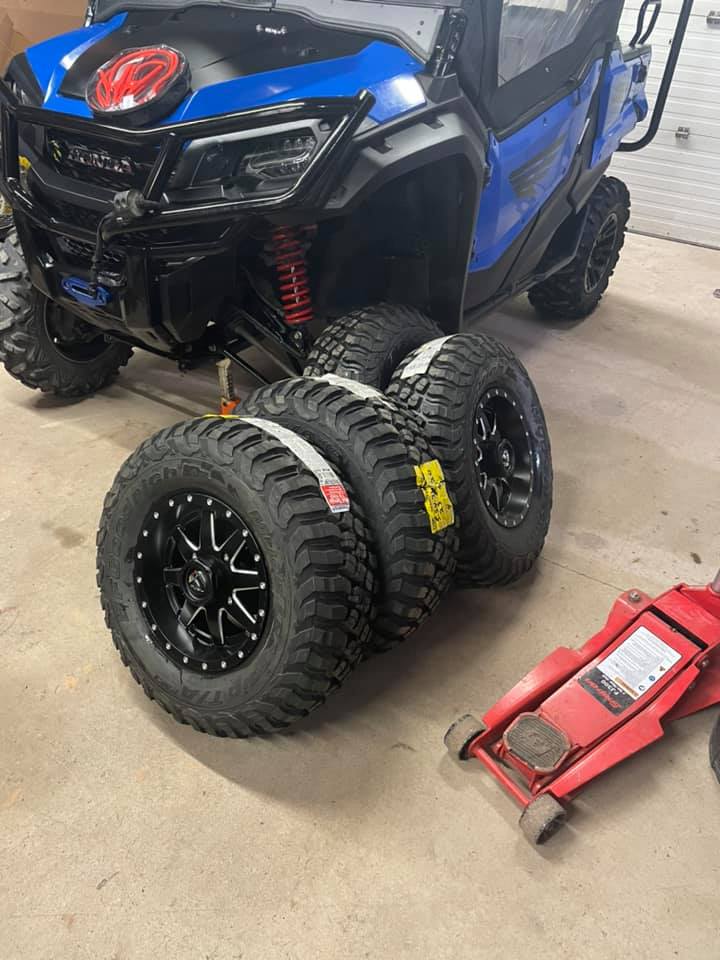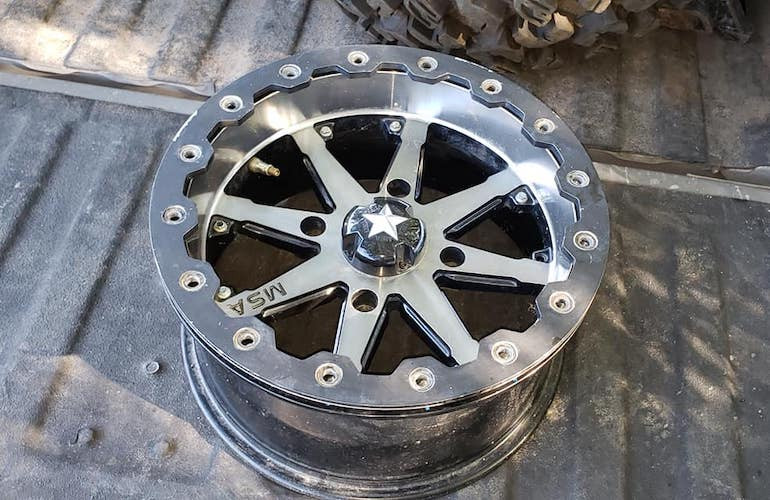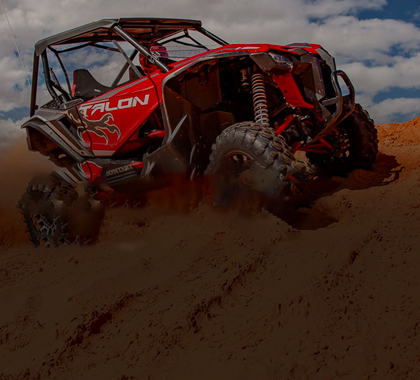Honda UTV Wheel Offset And Backspacing: What’s The Deal?
Oct 19th 2022
With all the different offset wheel options out there for the Honda Talon and Honda Pioneer, it can be quite difficult to decide on a set of aftermarket rims. You might be after a wider track width for better balance, or you might just want to stick with the stock track width for optimal handling, steering, and scrubbing. The type of riding you do will also play a factor in choosing the best wheel offset for your buggy. When you’re taking hard corners while racing or trail riding, the weight distribution of the vehicle will shift to the front tire opposite the direction of travel. If your front track width is wider than the rear, you’ll experience less understeer, more front-end grip, and greater overall stability. But it is possible to go too wide, and in some areas, gated trails exist with max width restrictions. To nip all the confusion in the bud, here is our explanation of wheel offsets and wheel backspacing, as well as some suggested aftermarket wheels for the Honda Pioneer and Honda Talon!
What Is Wheel Offset And Backspacing?
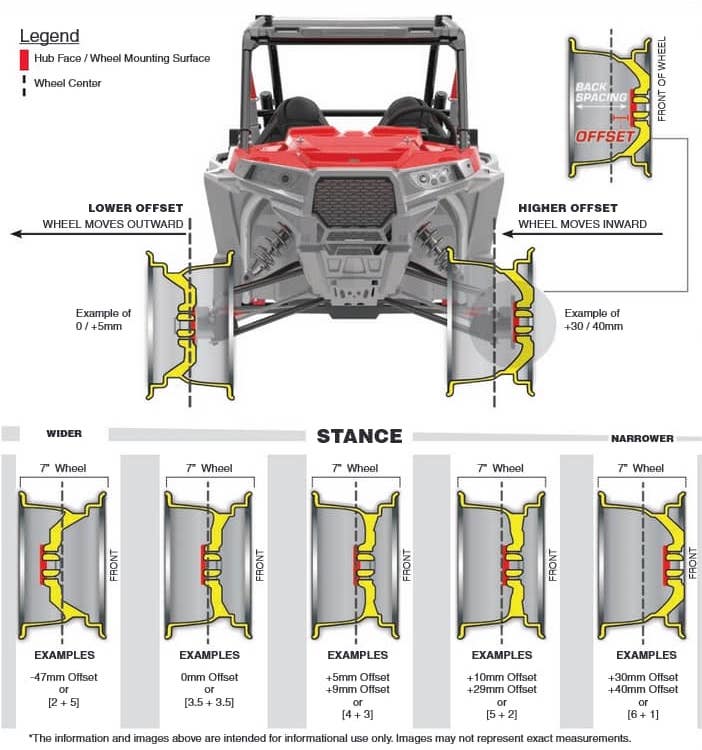
When you see wheel measurements like 4+3 or 6+1, this is not an offset measurement, but rather, a backspacing measurement. Although the two do work together, they aren’t the same thing. The backspacing of your Honda Pioneer or Honda Talon wheels is the measurement from the surface of the mounting hub to the inside of the wheel lip. Unfortunately, measuring things this way is far from accurate. A 6+1 backspacing on an STI wheel is actually an offset of 50mm, which equates to 5.5+1.5 instead. Similarly, an STI wheel that has a 30mm offset and labeled as a 5+2 is really a 4.75+2.25.
In race cars, these small differences are extremely important. But even with UTVs, you still want to use a wheel’s offset rather than its backspacing for extra precision. The offset of an aftermarket wheel is the measurement from the mounting surface of the wheel hub to the centerline of the wheel -- measured in millimeters -- and this can be either a positive or a negative number. To check the offset of your rims, there should be a stamped or cast number on the back of the wheel following the letters ET.
Backspacing information is general and less accurate, while offset information is more precise. You could have two wheels with offsets that differ up to a half of an inch with the same backspacing information from different manufacturers.
Honda Talon R / X Wheel Offsets And Backspacing
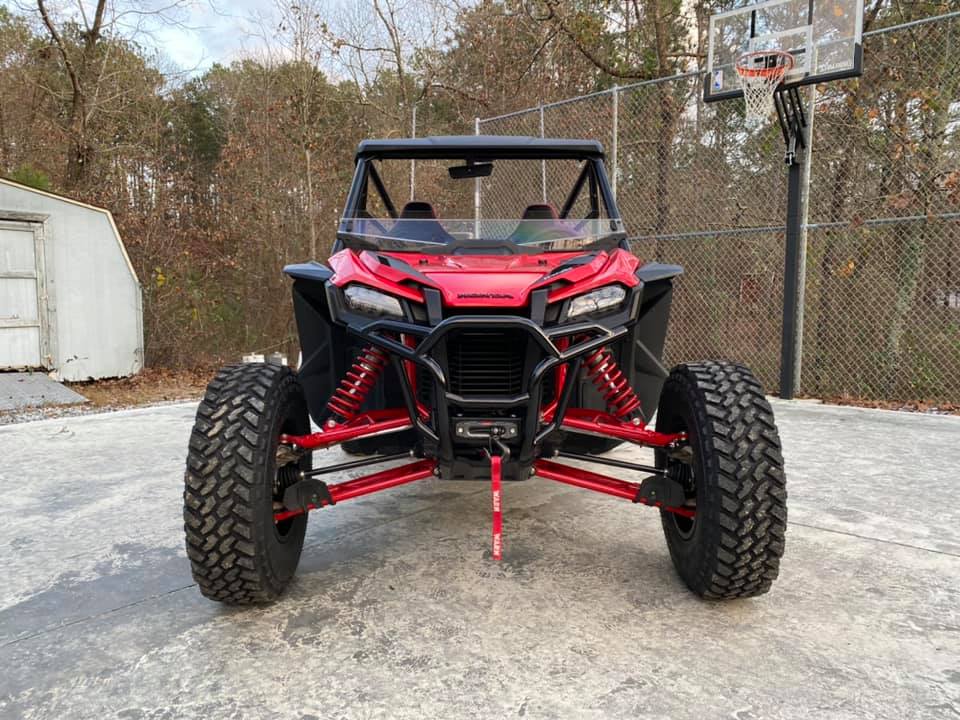
The factory hub-to-hub width on the rear end of the Honda Talon is just over three inches narrower than the hub-to-hub width of the front of the machine. Instead of using different aftermarket rims in the front and rear to replicate this, most riders choose instead to install 1.5” wheel spacers on the back. In addition to matching the factory width specs, this will also allow you to rotate your tires to even out the wear on the treads!
If you’re anti wheel spacers, there are still some good options available to you. You could run some 6+1 STI wheels on the front with a 50mm offset, and then install some 4+3 STI wheels with no offset in the rear to achieve a width of 69.7” in the rear and 70.6” up front. Alternatively, you could also use a set of 5.5+1.5 (45mm) System 3 wheels on the front with 4+3 (15mm) System 3 wheels in the back to make the rear width 69.4” and the front width 70.1”.
Honda Pioneer Wheel Offsets And Backspacing
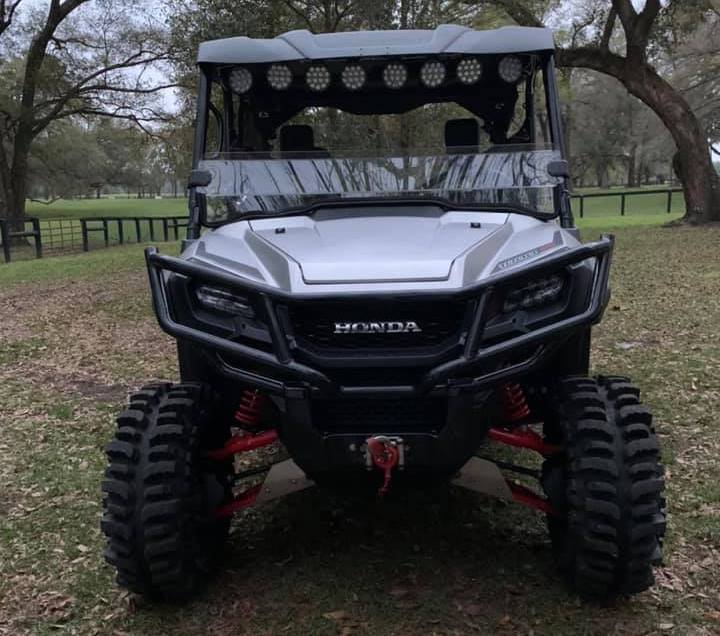
The stock wheel backspacing for both the Honda Pioneer 500 and the Honda Pioneer 700 is 5+1 in the front and 6+1 in the rear. If you want to keep the factory width with aftermarket Honda Pioneer 500 / 700 wheels, then some 14x7 STI HD9s will get you there – with the fronts being 6+1 and the rears being 5+2. If you use 5+2 all around, the front will be 2” wider than stock, and the rear will be 1” wider than stock.
For the Honda Pioneer 1000, the closest to stock you can get with aftermarket wheels is 6+1 in the front and 4+3 in the rear. Use some 4+3 wheels in the front and the width will increase from 63” to 68”. That being said, however, you should be fine deviating from the stock configuration with wheels that have a backspacing measurement of 5+2 – which will put the tires further under the fenders.
Pros And Cons Of Offset Wheels
Using offset Honda Talon or Honda Pioneer wheels that give the vehicle a wider stance could be beneficial for those who want more room for larger tires, but without extended fender flares, there’ll be nothing to stop mud from getting everywhere – including the sides, the roof, and the inside of the cockpit for riders without full cab enclosures. Furthermore, a wider-than-factory stance can also prohibit you from riding narrow trails, and therefore restrict your access to specific hunting zones, fishing holes, and other areas of interest.
In the end, different applications call for different wheels. Beadlock wheels are better for rocky terrain, while offset wheels are better for racing. But whatever kind of riding you do, we’ve got the perfect wheels for you at Everything Honda Offroad!
